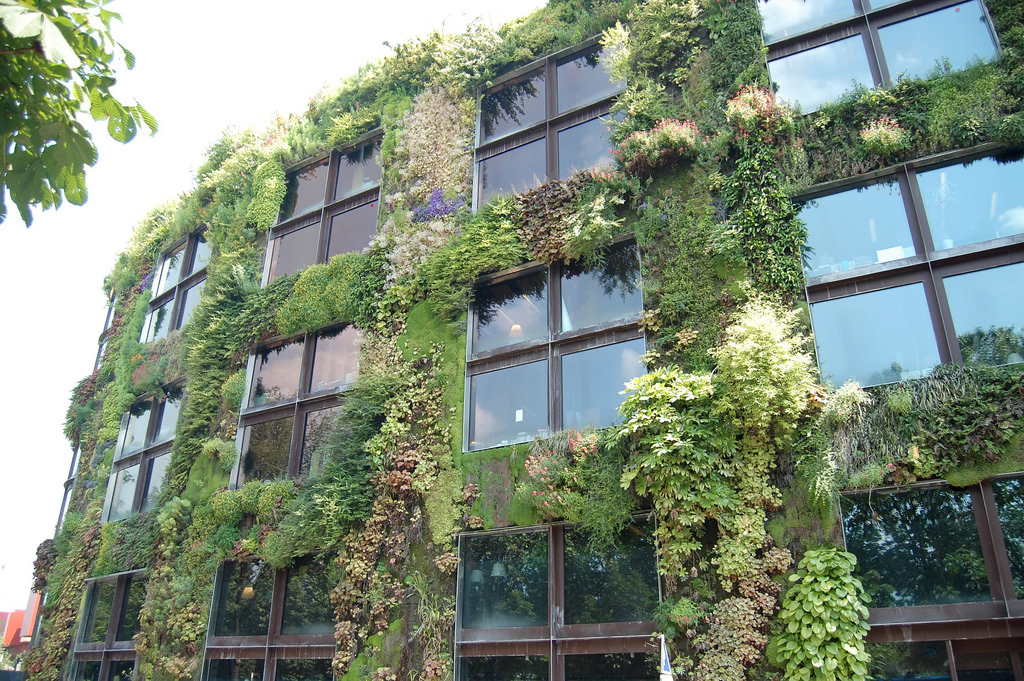The sounds of the city are adored by some as a source of energy and excitement – the hustle and bustle of people crowding the sidewalks accented by cars and buses whooshing past. Dogs bark, people shout, music plays from a window, and somewhere (hopefully in the distance) a siren wails. These noises are as integral to the city as physical infrastructure like sidewalks and streetlights, but the urban soundscape is not universally embraced. Even those who like urban sounds sometimes need a respite. How can designers ensure that quiet spaces exist in the middle of a roaring city?
“Soundscape” refers to both the natural acoustic environment (animals and sounds from trees, water, weather, etc.) and sounds created by humans (musical compositions, human activities, sounds of mechanical origin, etc.) But noise is more than just a fact of urban life — it can actually affect human well-being.
The threshold of pain for most people is in the range of 115-140 decibels; audiologists agree that no unprotected ear should ever be stressed with a sound higher than 135 decibels. As more sounds fill our environments, however, the sounds that are important to hear must become louder, resulting in a seemingly endless increase in volume levels. For example, the sound output of the police siren has risen 40dB in many North American cities since the beginning of the last century as a result of more traffic, more street activity, and an increased ambient sound level in general. The police siren needs to be heard among the highest levels of city sounds.
Sheer volume is not the only aspect of sound that people may find distressing; complexity of sound also affects us. If a sound is very complex, it is often “unreadable” and people tend to become annoyed (i.e. a jet engine, a sewing machine). If the sound complexity is too low, the sound is not interesting or attractive to the person. There is an intermediate level of complexity, a sweet spot between these two extremes, which generates the best possible feelings from the widest variety of individuals. For example, the human voice is a complex sound, but it has the right amount of complexity that we find it enjoyable.
What does this mean for designers, planners, and engineers working in this environment? The goal is to create zones and refuges with varying acoustical complexity. Complete silence in an urban space is impossible to achieve, but much city noise can be masked and dimmed. Using natural sound sources, such as water and vegetation, has proved to be effective for this purpose and desirable to citizens.
Green walls can, for example, reduce up to 40 decibels of outdoor noise and vibration if properly designed and constructed. A vegetated buffer such as a hedgerow or green wall constructed from a variety of plants can also absorb and deflect sound waves very effectively. Plant choice is important, as different types of leaves reduce different types of noises. The intensity, frequency, and direction of the sound, and the location, height, width, and density of the planting determine these factors.
As an example, mixed broadleaf plantings at least 25 feet (7.5 meters) thick and conifers 50 to 100 feet (15 to 30 meters) thick have been shown to decrease noise levels by up to 10 decibels. It should be noted that in order to be effective sound barriers, these plants must have foliage that reaches to the ground, and for year-round benefits evergreen plants are best. It is also important to include lawn or ground cover in these “quiet zones.” Much like carpeting a room, turf grass and other low vegetation has a muffling effect on sound, compared with surface areas of bare soil or pavement.
Trees and shrubs don’t just block noise – they also produce a masking effect through the rustling of leaves, the movement of branches in the wind, the sounds of birds, insects and other animals. Published results on the effectiveness of tree and shrub barriers vary enormously, however a review by Huddurt (1990) shows that in some instances noise can he reduced by 6 decibels over a distance of 30 meters where planting is particularly dense. Leonard and Parr (1970) and Reethof (1973) found that a dense belt of trees and shrubs between 15 to 30 meters wide could reduce sound levels by as much as 6 to 8 decibels. Cook and Van Haverheke (1972) also found reductions in noise level of 5 to 10 decibels for belts of trees between 15 to 30 meters wide.
Using plants in the landscape to achieve sound dampening is important, but noticing noise might be as much psychological as physical. When people don’t see the source of noise, it bothers them less. In other words, the use of plantings between people and the noise impacts the human experience regardless of the thickness of the vegetation. Designers can apply this knowledge to different scales. On the small neighborhood scale, green spaces, green walls, and water walls can be used to dampen and disguise sounds. On the larger, city scale, zoning areas with “silent areas” interspersed with more “noisy areas” could be an option when master planning, as would be designing individual acoustic profiles for specific zones in a city.
As you walk around your city, try to notice how sound is affected by plants and physical barriers. Greening our cities is important for dispersing heat and improving air quality, but we now know that green spaces can also fight noise pollution, creating a more pleasant urban environment. Urban designers take note: peace and quiet can be achieved, even in the most energetic cities.
References
Acoustics.org, “Urban Soundscapes”
Hellis Tree Consultants, “Sound Barriers and the Use of Trees and Shrubs to Reduce Noise”
Noise & Health Journal, “Noise pollution and annoyance: An urban soundscapes study”
Housing and Building National Research Center Journal, “The phonic identity of the city urban soundscape for sustainable spaces”
The Nature of Cities, “Designing the Urban Soundscape”






Leave Your Comment